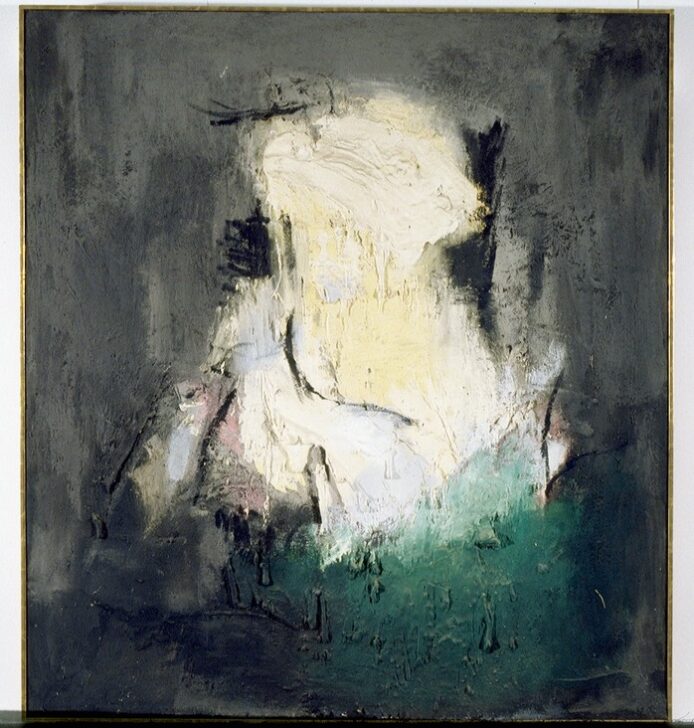Bathsheba I
Jules Olitski

Description
Eschewing spectral colors in reaction against the bright, Fauvelike hues he had employed in his Paris years, Olitski next began a series of paintings that were the reverse of the drawing board portraits" but no less prophetic. Thick, plastered areas of white impasto swell up out of the center of grayed and generally heavily painted surfaces. The whole has a viscous density far exceeding the normal facture of oil painting. Sometimes these paintings are reminiscent of landscape or even more of a Rembrandt portrait, where the thickest impasto coincides with both the approximate center of the picture and the area of greatest highlight. In the way that the delicate, neutral tonalities and earth colors transform the aggressive relieflike paint matter, these paintings remind one of postwar European painting: Fautrier, Dubuffet, and de Staël. In any event they are very French and out of the mainstream of American abstraction as it was developing in those years. An indication of Olitski's affinities with the belle peinture tradition, these 'impasto pictures,' with their subtleties of chiaroscuro and sensuous paint handling, point forward to his most recent work. More importantly, they are already of surprisingly high quality."
Kenworth Moffett, "Introduction," in Jules Olitski (Boston: Museum of Fine Arts, 1973), p. 8.
Usage Rights:
If you are interested in using an image for a publication, please visit https://umma.umich.edu/request-image/ for more information and to fill out the online Image Rights and Reproductions Request Form.